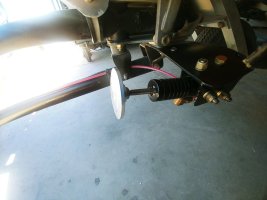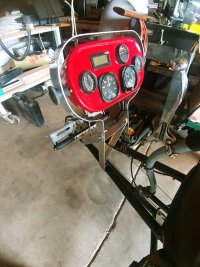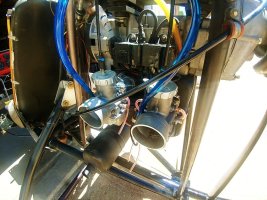Resasi
Gold Supporter
- Joined
- Jul 2, 2007
- Messages
- 9,098
- Location
- London/ Kilifi Kenya
- Aircraft
- Gyrs, RAF 2000/Mgni/Bnsn/Hrnet/Mrlin/Crckt/MT-03/Lyzlle AV18-A/Prdtor. GT-VX1&2, Pax ArrowCopter
- Total Flight Time
- 100+ gyro, 16,000+ other
Regarding forward travel on the rotor head, when my son and I were building our Hornet, I had noted that the mast was taller than the Benson I had been flying and it would be difficult to reach the rotor.
The rotor brake we had fabricated from a bicycle brake was not very robust, and so I did put in a negative 1degree with full forward stick to allow me to face into wind and, if needed, use that to assist in slowing/stopping the rotor by allowing a small amount of air into the top of the rotor. I was still very new and ignorant at the time, we never managed to get enough time on that machine to find out the negative aspect of that particular choice.
The rotor brake we had fabricated from a bicycle brake was not very robust, and so I did put in a negative 1degree with full forward stick to allow me to face into wind and, if needed, use that to assist in slowing/stopping the rotor by allowing a small amount of air into the top of the rotor. I was still very new and ignorant at the time, we never managed to get enough time on that machine to find out the negative aspect of that particular choice.
Last edited:




